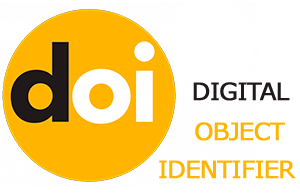APPLICATION OF DESIGN THINKING IN SCHOOL MATHEMATICS LESSONS: EFFECTIVE METHODS AND TOOLS
DOI:
https://doi.org/10.48371/PEDS.2025.78.3.035Keywords:
school mathematics, design thinking,, tools, methods, innovative approaches, geometry, learning process, student engagement, educational technologiesAbstract
This article comprehensively examines the methods and tools for the effective application of design thinking in school mathematics lessons. The era of globalization gives a new impetus to the education system, requiring the formation of creative and adaptive thinking in students. This becomes a key value in providing high-quality and meaningful education. In times of rapid change, mastering 21st-century skills is a key direction for enhancing the intellectual potential of future generations. In this context, the design thinking method is a modern approach that promotes students’ adaptation to uncertainty, awareness of vital issues, and the development of a responsible personality capable of making a positive impact on society.
The purpose of the study is to identify effective ways to apply the design thinking method in school mathematics lessons and evaluate its potential in developing students’ critical and creative thinking, their active participation in the learning process, and increased interest in the subject. The article analyzes how the integration of design thinking into the educational process contributes not only to the acquisition of theoretical knowledge but also to the development of skills for its practical application in real life. Special attention is given to the potential for developing critical thinking, problem-solving skills, teamwork, and independent decision-making by incorporating this method into the teaching of mathematics and geometry.
Bridging the gap between abstract mathematical concepts and their real-life applications, and connecting knowledge to life, is considered one of the key advantages of this approach. Attention is also given to the principle of empathy, which directly affects the personal development of students. This principle is based on understanding the needs of others and fostering a culture of acting for the common good.
The article provides specific examples of using design thinking steps in explaining topics such as “spatial figures,” “notations,” and “simple fractions” for 5th–6th grade students. Through these examples, students not only become more engaged with the subject but also unleash their creative potential. Additionally, the article explores effective ways of integrating technologies into the educational process. The results of the study clearly demonstrate the contribution of the design thinking method to deep learning, practical application of knowledge, and the comprehensive development of the student’s personality.








